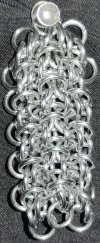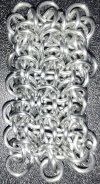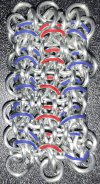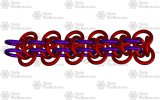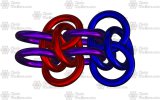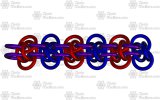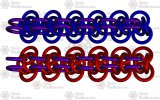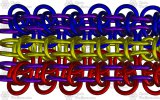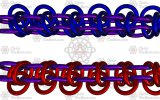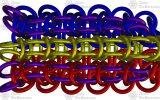Hello everyone, I was playing around with the Elfin weave last night and I ended up making a sheeted variant of it. I have spent time looking through weave documentation for a similar weave however I have not found one yet. I was wondering if this is a new idea and if so, does it count as a new weave? I would very much appreciate your input. I have also attached images to help, sorry for the low quality I am still working on getting better at taking pictures of chainmail.
